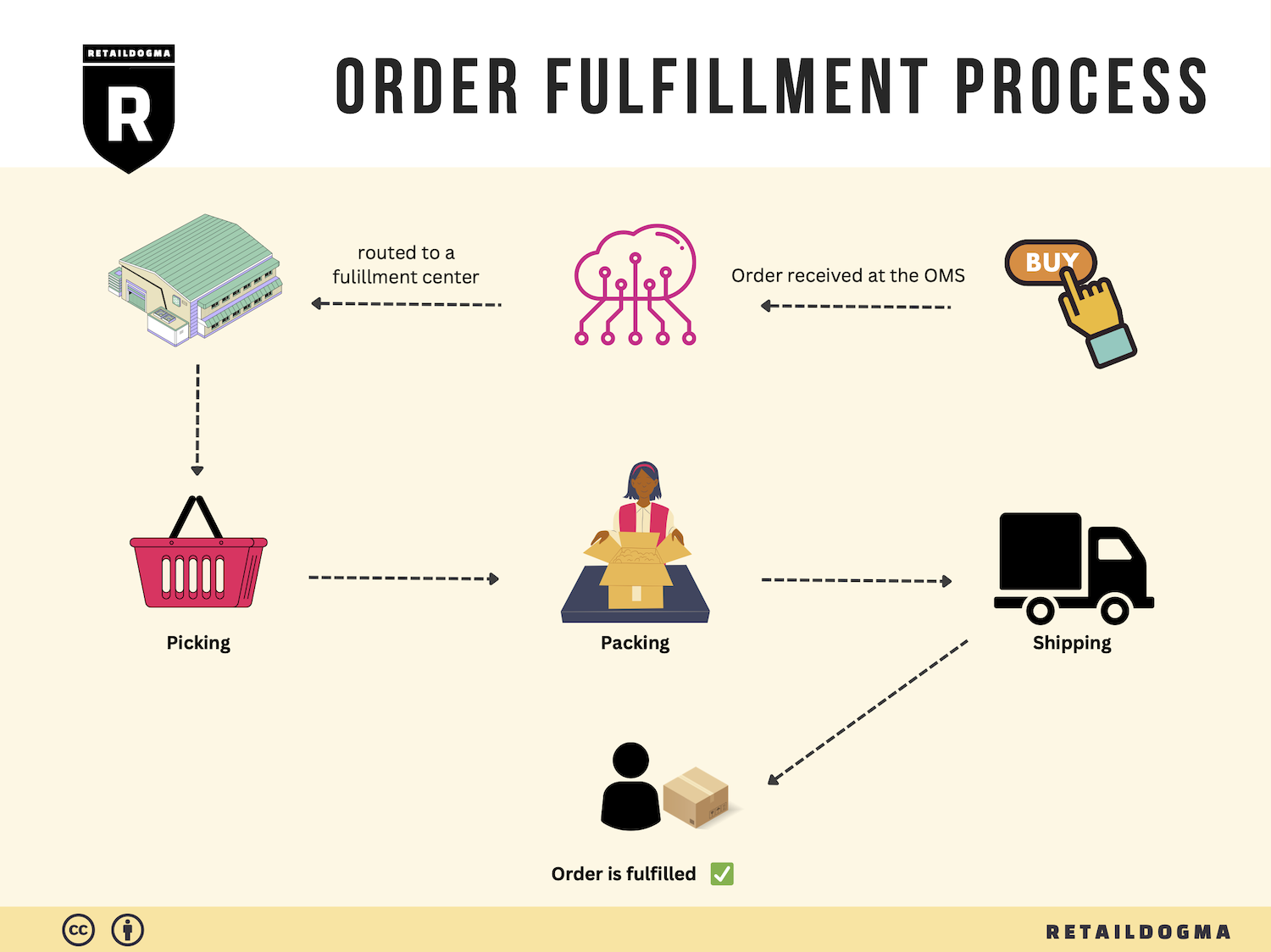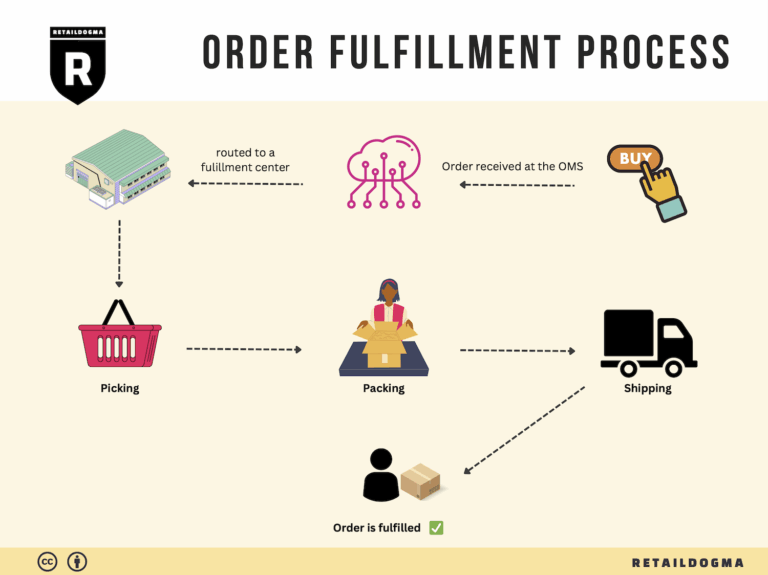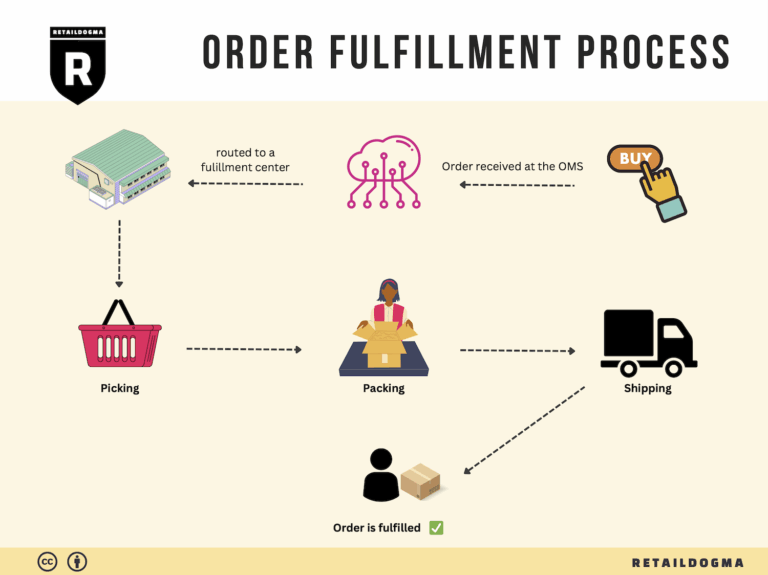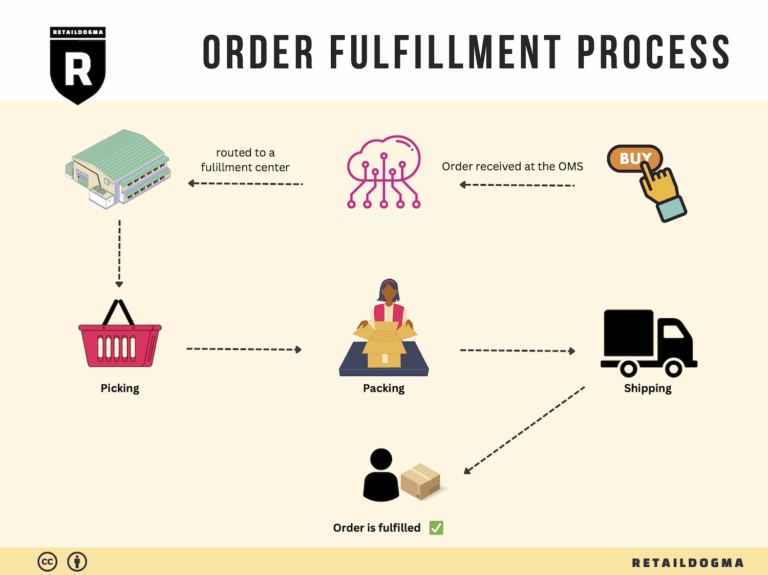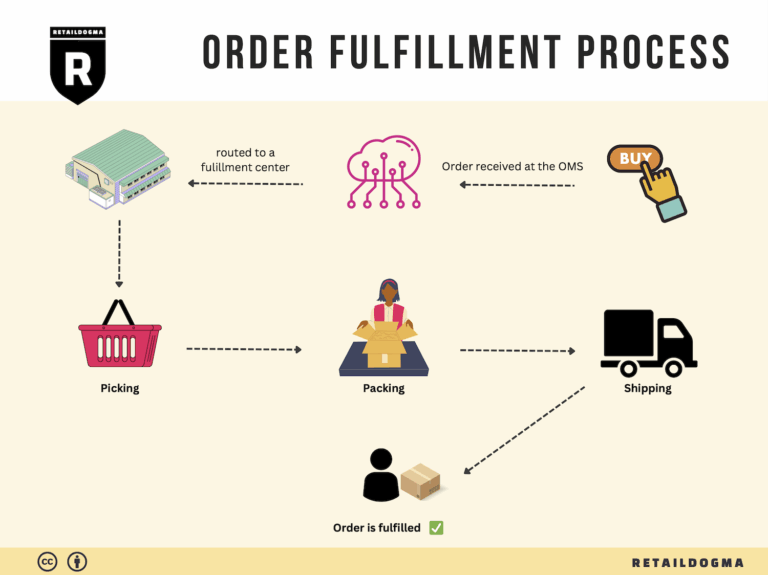How Order Fulfillment Works: A Step-by-Step Guide for Businesses
What is E-commerce Fulfillment? An Introduction for Growing Businesses
Understanding E-commerce Fulfillment
As an e-commerce business owner, you’re likely no stranger to the overwhelming demands of packing and shipping orders. The excitement of growth can quickly become a burden when the logistics of order fulfillment start to pile up. From managing inventory to ensuring timely deliveries, the complexities of getting a product into your customer’s hands can detract from your ability to focus on scaling your business. This is where e-commerce fulfillment comes into play.
E-commerce fulfillment is the process of receiving, processing, and delivering orders to customers. It encompasses every step from inventory management to shipping, and it’s essential for maintaining customer satisfaction and operational efficiency. As you scale, understanding the nuances of fulfillment can be a game-changer for your business.
In this guide, we will explore various fulfillment models, including Third-Party Logistics (3PL) and Fulfillment by Amazon (FBA). Each model has its advantages and challenges, and selecting the right one can significantly affect your operational efficiency and bottom line. We will also delve into core fulfillment services such as warehousing, order processing, and shipping, which are critical components of a successful fulfillment strategy.
Choosing the right fulfillment partner is crucial for your e-commerce success. This guide will provide practical insights on what to look for in a fulfillment provider, including their technology capabilities, service offerings, and customer service reputation. We will also cover pricing structures, helping you understand the costs associated with different fulfillment solutions and how to find a balance between service quality and cost-effectiveness.
Ultimately, the goal of this guide is to empower you with the knowledge needed to make informed decisions about your logistics. By understanding the different facets of e-commerce fulfillment, you can optimize your operations, improve customer satisfaction, and position your business for sustainable growth. Whether you’re just starting or are on the brink of expansion, this guide will serve as a valuable resource in navigating the complexities of e-commerce fulfillment.
What You’ll Learn In This Guide
- What is E-commerce Fulfillment? An Introduction for Growing Businesses
- The Order Fulfillment Process: From ‘Buy’ Button to Customer’s Door
- Comparing Fulfillment Models: In-House vs. 3PL vs. Dropshipping
- A Deep Dive into Amazon FBA: Pros, Cons, and Who It’s For
- Core Services Offered by Fulfillment Centers
- How to Choose a Fulfillment Partner: A 6-Point Checklist
- Understanding Fulfillment Pricing: A Breakdown of Common Fees
- Frequently Asked Questions (FAQs) about Fulfillment
- Conclusion: Is Outsourcing Fulfillment the Right Move for Your Business?
- Important Disclaimer
The Order Fulfillment Process: From ‘Buy’ Button to Customer’s Door
1. Receiving Inventory
The first step in the order fulfillment process is receiving inventory. This involves the physical arrival of products at the fulfillment center, where they are checked against purchase orders to ensure accuracy. During this stage, each item is assigned a Stock Keeping Unit (SKU), which is a unique identifier that helps track inventory levels and manage stock efficiently.
Importance: Effective inventory receiving is crucial as it sets the foundation for accurate inventory management. Any discrepancies at this stage—such as damaged goods or incorrect quantities—can lead to issues down the line, including stockouts or delays in fulfilling customer orders. By implementing a robust receiving process, businesses can minimize errors and maintain optimal inventory levels.
2. Warehouse Storage
Once the inventory is received and verified, it is then organized and stored within the warehouse. This involves placing items in designated storage areas based on various criteria, such as item size, popularity, or SKU. Efficient warehouse storage often employs a system of bins, shelves, and pallets to maximize space utilization.
Importance: Proper storage is vital for quick retrieval and efficient order processing. An organized warehouse can significantly reduce the time it takes to find and pick items, thereby speeding up the overall fulfillment process. Moreover, effective space management can lower operational costs and enhance the ability to scale as the business grows.
3. Order Picking
Order picking is the process of retrieving items from their storage locations based on customer orders. This is often facilitated through the use of pick lists—documents or digital records that outline which items need to be collected for each order. Various picking methods can be utilized, including single order picking, batch picking, and zone picking, depending on the volume and type of orders.
Importance: The picking stage is critical as it directly affects order accuracy and fulfillment speed. Mistakes made during picking can lead to incorrect shipments, resulting in customer dissatisfaction and increased return rates. Efficient picking processes, combined with technology such as barcode scanners or mobile picking devices, can enhance accuracy and improve operational efficiency.

4. Order Packing
After items have been picked, they are moved to the packing station for preparation for shipment. During this phase, products are carefully packed into boxes or envelopes, often using packing materials to protect them during transit. Key considerations include selecting the appropriate packaging based on item dimensions and weight, as well as applying shipping labels and documentation.
Importance: Effective packing is essential for ensuring that products arrive at customers’ doors in excellent condition. Properly packed orders minimize the risk of damage during shipping, which is crucial for maintaining customer satisfaction and brand reputation. Additionally, optimized packing can help reduce shipping costs by minimizing the size and weight of packages.
5. Shipping & Delivery
The final step in the order fulfillment process is shipping and delivery. Once orders are packed, they are handed over to shipping carriers for distribution to customers. This stage involves selecting the appropriate shipping method based on factors such as delivery speed, cost, and destination. Businesses often utilize tracking systems that allow customers to monitor their order status in real-time.
Importance: Timely and reliable shipping is a key determinant of customer satisfaction in e-commerce. A smooth shipping process can enhance the overall customer experience, encouraging repeat purchases and positive reviews. Leveraging partnerships with reputable carriers and utilizing advanced logistics technology can significantly improve delivery performance and support business growth.
By following these five steps—receiving inventory, warehouse storage, order picking, order packing, and shipping & delivery—e-commerce businesses can create a streamlined order fulfillment process that not only meets customer expectations but also positions them for scalability and success in a competitive marketplace.
Comparing Fulfillment Models: In-House vs. 3PL vs. Dropshipping
Fulfillment Model Comparison
| Model | Who Handles Inventory | Best For (Business Stage) | Key Advantage | Key Disadvantage |
|---|---|---|---|---|
| In-House Fulfillment | The business itself | Established businesses with stable demand | Complete control over inventory and processes | High overhead costs and resource-intensive |
| Third-Party Logistics (3PL) | 3PL provider | Growing businesses needing scalability | Access to expertise, technology, and reduced shipping costs | Less control over inventory and potential misalignment with business goals |
| Dropshipping | Supplier or manufacturer | Startups and small businesses | Low initial investment and no inventory risk | Lower profit margins and reliance on supplier reliability |
In-House Fulfillment
In-house fulfillment involves managing the entire logistics process within your own business. This model is often utilized by established companies that have a stable demand and sufficient resources to handle inventory, warehousing, and order processing. The primary advantage of in-house fulfillment is the complete control it offers over every aspect of the fulfillment process, including inventory management, quality control, and customer service. Businesses can tailor their operations to meet specific needs and maintain direct oversight of their supply chain.
However, this model comes with significant disadvantages. The overhead costs can be high, as businesses must invest in warehousing space, staffing, and technology. Additionally, in-house fulfillment requires a considerable commitment of time and resources, which can detract from other critical business functions such as marketing and product development. As demand fluctuates, companies may also face challenges in scaling their operations efficiently, leading to either overstocking or stockouts.
Third-Party Logistics (3PL)
Third-party logistics (3PL) involves outsourcing fulfillment operations to a specialized logistics provider. This model is ideal for growing businesses that need to scale their operations without the burden of managing inventory and logistics internally. 3PL providers like AMZ Prep and QuickBox Fulfillment offer expertise in warehousing, distribution, and shipping, often leveraging advanced technology to enhance efficiency and reduce costs.
One of the key advantages of using a 3PL is the ability to tap into their established infrastructure and expertise, which can significantly reduce shipping costs and improve delivery times. Furthermore, 3PLs often provide additional services such as inventory management, returns processing, and order tracking, allowing businesses to focus on their core competencies.
However, there are downsides to consider. By outsourcing fulfillment, businesses may relinquish some control over their inventory and customer service processes. It is crucial to choose a 3PL partner that aligns with your business goals and values, as misalignment can lead to poor customer experiences and operational inefficiencies. Additionally, businesses must ensure they maintain effective communication with their 3PL provider to avoid misunderstandings and ensure smooth operations.
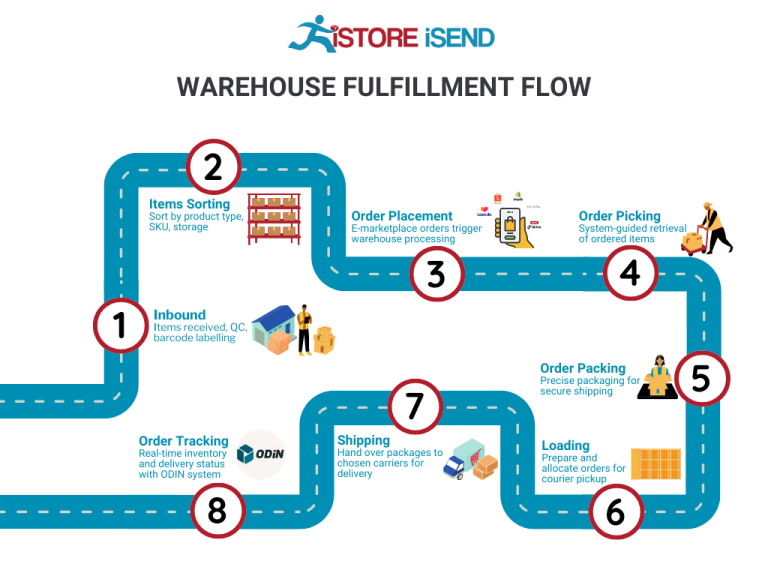
Dropshipping
Dropshipping is a fulfillment model where the retailer does not keep products in stock but instead transfers customer orders and shipment details to a supplier or manufacturer, who then ships the products directly to the customer. This model is particularly attractive for startups and small businesses looking to minimize upfront investment and inventory risk.
The primary advantage of dropshipping is the low barrier to entry. Entrepreneurs can launch an e-commerce store without investing heavily in inventory, warehousing, or fulfillment processes. This flexibility allows businesses to experiment with various products and markets without the financial risk associated with holding inventory. Additionally, dropshipping can streamline operations, as the supplier handles inventory management, shipping, and logistics.
However, dropshipping is not without its challenges. Profit margins can be lower compared to other fulfillment models since suppliers often charge higher prices for their services. Furthermore, reliance on third-party suppliers can lead to issues with product quality, shipping delays, and stock availability, all of which can negatively impact customer satisfaction. As businesses grow, they may find that the lack of control over the supply chain limits their ability to scale effectively and respond to customer needs.
In summary, the choice of fulfillment model should align with your business goals, stage of growth, and operational capabilities. Each model presents unique advantages and challenges, so it is essential to carefully evaluate your options to determine the best fit for your e-commerce strategy.
A Deep Dive into Amazon FBA: Pros, Cons, and Who It’s For
Understanding Fulfillment by Amazon (FBA)
Fulfillment by Amazon (FBA) is a service provided by Amazon that allows sellers to store their products in Amazon’s fulfillment centers. When a customer orders a product, Amazon handles the storage, packaging, and shipping on behalf of the seller. This service streamlines the logistics of e-commerce, enabling sellers to leverage Amazon’s extensive distribution network and customer service capabilities.
How FBA Works
-
Product Preparation: Sellers send their inventory to Amazon’s fulfillment centers. Products must meet specific preparation guidelines provided by Amazon, including labeling and packaging requirements.
-
Storage: Once received, products are stored in Amazon’s warehouses. Sellers are charged a monthly storage fee based on the amount of space their inventory occupies.
-
Order Processing: When a customer places an order, Amazon takes care of the entire fulfillment process. This includes picking the product from the warehouse, packing it, and shipping it directly to the customer.
-
Customer Service: Amazon also manages customer service and returns for FBA orders, providing support through its customer service channels.
-
Multi-channel Fulfillment: Sellers can also use FBA to fulfill orders from other sales channels, not just Amazon, allowing for a streamlined logistics process across multiple platforms.

Pros of Fulfillment by Amazon
1. Prime Eligibility
One of the most significant advantages of FBA is that products fulfilled through Amazon are eligible for Amazon Prime. This means that Prime members can benefit from free two-day shipping, increasing the likelihood of sales. Prime eligibility is a compelling selling point, as it attracts millions of loyal customers who prefer to buy products with fast shipping options.
2. Customer Trust
Amazon has established itself as a trusted platform for online shopping. By using FBA, sellers can benefit from this trust, as customers often feel more secure purchasing items fulfilled by Amazon. The assurance of reliable shipping and customer service enhances the overall shopping experience, leading to higher conversion rates.
3. Multi-channel Fulfillment
FBA allows sellers to fulfill orders from various sales channels, including their own websites and other marketplaces. This flexibility enables businesses to streamline their operations by using a single fulfillment service for all their sales channels, reducing complexity and improving efficiency.
4. Scalability
FBA can significantly reduce the burden of logistics for growing businesses. As sales increase, sellers can easily scale their operations without needing to invest in warehousing, staffing, or logistics management. Amazon handles the logistics, allowing sellers to focus on product development and marketing.
5. Access to Advanced Tools
Amazon provides FBA sellers with access to a suite of tools to help manage their inventory and sales. This includes insights into sales performance, inventory levels, and customer feedback, allowing sellers to make data-driven decisions to optimize their business.
Cons of Fulfillment by Amazon
1. High Fees
One of the major drawbacks of FBA is the associated costs. Sellers incur various fees, including storage fees, fulfillment fees, and additional costs for long-term storage. These fees can add up quickly, especially for products that have low margins or slow turnover rates.
2. Strict Inventory Rules
Amazon has stringent guidelines regarding inventory management. Sellers must adhere to specific inventory limits and policies, which can be challenging for businesses with fluctuating demand. Failure to comply with these rules can result in penalties or removal from the FBA program.
3. Commingling Risks
FBA operates on a commingling system, meaning that sellers’ products may be mixed with similar items from other sellers in the same fulfillment center. This can lead to issues such as receiving damaged or incorrect items, which can harm a seller’s reputation. Sellers must be diligent in managing their inventory to mitigate these risks.
4. Limited Control Over Branding
While using FBA, sellers have limited control over the packaging and branding of their products. Amazon’s standardized packaging can dilute a seller’s brand identity, making it difficult to differentiate their products from competitors.
5. Potential for Inventory Loss
There is a risk of inventory loss due to factors such as misplacement or damage during storage or shipping. While Amazon has policies in place to address these issues, it can still be a concern for sellers relying heavily on FBA.
Who is FBA Best For?
Fulfillment by Amazon is an excellent option for various types of e-commerce businesses, particularly:
-
Small to Medium-Sized Sellers: Businesses that lack the resources to manage their logistics and fulfillment operations can benefit from the scalability and ease of use offered by FBA.
-
Retailers with High Sales Volume: Sellers with a strong sales volume and fast-moving inventory can take advantage of FBA’s efficiencies and Prime eligibility to enhance their competitive edge.
-
Brands Looking to Expand: Businesses aiming to reach a broader audience without investing heavily in infrastructure may find FBA an attractive solution, as it allows for easy entry into the Amazon marketplace.
-
Multi-channel Sellers: Those selling across multiple platforms will appreciate FBA’s multi-channel fulfillment capabilities, enabling them to streamline operations and improve customer satisfaction.
In conclusion, while Fulfillment by Amazon offers significant advantages in terms of convenience, customer trust, and scalability, it also comes with its challenges. Businesses must carefully assess their needs, product types, and profit margins to determine if FBA is the right fit for their e-commerce strategy.
Core Services Offered by Fulfillment Centers
Inventory Management & Warehousing
Effective inventory management and warehousing are critical components of a successful e-commerce operation. Fulfillment centers provide businesses with dedicated storage solutions that help maintain optimal inventory levels. These centers utilize sophisticated inventory management systems that track stock levels in real-time, allowing e-commerce businesses to monitor their inventory accurately.
The benefits of efficient inventory management include reduced holding costs, decreased risk of stockouts or overstock situations, and improved cash flow. By outsourcing warehousing to a fulfillment center, e-commerce businesses can free up valuable space in their operations and focus on core activities like marketing and product development. Additionally, fulfillment centers often employ advanced technologies, such as barcode scanning and RFID tracking, which enhance accuracy and streamline inventory processes.
Pick and Pack Services
Pick and pack services are at the heart of order fulfillment, transforming a customer’s order into a ready-to-ship package. This process involves selecting the right products from the warehouse (picking) and then packing them securely for shipping (packing). Fulfillment centers typically employ automated systems and trained staff to ensure that orders are picked and packed efficiently.
The advantages of utilizing pick and pack services are multifaceted. First, they significantly reduce the time it takes to process orders, which can lead to faster shipping times and improved customer satisfaction. Furthermore, fulfillment centers implement quality control measures during the packing process to minimize errors, ensuring that customers receive the correct items. For e-commerce businesses, this means fewer returns and exchanges, which can enhance profitability. Additionally, with the increasing consumer expectation for quick delivery, efficient pick and pack services can provide a competitive edge in the marketplace.
Kitting and Assembly
Kitting and assembly services involve the grouping of multiple products into a single package or preparing products for sale. This may include assembling components into a final product, bundling items together, or creating promotional kits. Fulfillment centers offer these services to streamline the process of preparing products for distribution, which can be particularly valuable for businesses that sell complex items or promotional packages.
The primary benefit of kitting and assembly services is the reduction of labor and time spent on order preparation. By outsourcing these tasks to a fulfillment center, e-commerce businesses can ensure that products are packaged professionally and delivered to customers in pristine condition. This not only enhances the customer experience but also allows businesses to focus on strategic initiatives rather than operational tasks. Additionally, kitting can lead to increased sales through bundling strategies, as customers are often attracted to package deals that offer perceived value.
Returns Management (Reverse Logistics)
Returns management, or reverse logistics, is a crucial service provided by fulfillment centers that handles the process of returns from customers. This includes receiving returned items, inspecting them, restocking them if they are in sellable condition, or processing them for disposal or recycling. Effective returns management is vital for maintaining customer satisfaction and loyalty in the e-commerce landscape.
The benefits of a well-structured returns management system are substantial. First, it provides a seamless experience for customers who may need to return items, which can enhance their overall satisfaction and increase the likelihood of repeat business. Moreover, fulfillment centers often have established processes that can minimize the costs associated with returns, such as efficiently processing returned items and reducing the time they spend out of inventory. For e-commerce businesses, this translates to better inventory turnover rates and improved cash flow. Additionally, insights gathered from return data can help businesses understand customer preferences and improve product offerings, ultimately driving sales growth.
Conclusion
In summary, partnering with a fulfillment center can provide e-commerce businesses with essential services that enhance operational efficiency and customer satisfaction. By leveraging inventory management and warehousing, pick and pack services, kitting and assembly, and returns management, businesses can streamline their logistics and focus on scaling their operations. As the e-commerce landscape continues to evolve, the strategic use of fulfillment centers will be vital for companies looking to maintain a competitive edge and meet customer expectations effectively.
How to Choose a Fulfillment Partner: A 6-Point Checklist
Location & Warehouse Network
The geographic location of your fulfillment partner is crucial for shipping efficiency and cost-effectiveness. A partner with strategically located warehouses can help minimize shipping times and costs, particularly if they have facilities close to major urban centers like New York City.
Questions to Ask:
– Where are your warehouses located, and how does this influence shipping times to my primary customer base?
– Do you have a network of warehouses that can accommodate multi-channel fulfillment needs?
– What are your average shipping times to key regions, and how do you manage logistics during peak seasons?
Technology & Integrations
In today’s digital landscape, having the right technology is essential for smooth operations. A fulfillment partner should offer robust software solutions that integrate seamlessly with your e-commerce platforms (like Amazon), inventory management systems, and customer relationship management tools.
Questions to Ask:
– What technology platforms do you use for order management, inventory tracking, and shipping?
– How do you ensure data accuracy and real-time visibility into inventory levels?
– Can your system integrate with my existing platforms? If so, what is the process for integration and ongoing support?
Specializations (e.g., Cold Storage, Oversized Items)
Different products require different handling methods. If you deal with specialized items, such as perishables or oversized goods, it’s essential to choose a partner that has experience and capabilities in those areas.
Questions to Ask:
– What types of products do you specialize in handling, and what unique services do you offer (e.g., cold storage, fragile items)?
– Can you provide examples of how you’ve successfully managed similar products for other clients?
– What measures do you have in place to ensure the quality and safety of specialized items during storage and shipping?
Scalability & Capacity
As your business grows, your fulfillment needs will likely change. A suitable partner should have the capacity to scale operations in line with your growth, whether that means increasing warehouse space, adding more fulfillment centers, or enhancing staffing during peak seasons.
Questions to Ask:
– How do you handle seasonal fluctuations in order volume?
– What is your capacity for scaling operations quickly if my business experiences rapid growth?
– Can you provide case studies or references from clients who have successfully scaled with your support?
Pricing and Contracts
Understanding the pricing structure is vital to ensure that you’re getting good value for your investment. Look for transparency in pricing and consider the terms of contracts to avoid any hidden fees that could affect your budget.
Questions to Ask:
– Can you provide a detailed breakdown of your pricing structure, including any additional fees (e.g., storage, pick-and-pack, returns)?
– What is the length of your contracts, and what are the terms for termination or renegotiation?
– Are there any discounts available for long-term commitments or high-volume orders?
Customer Support & Reviews
Reliable customer support can make or break your relationship with a fulfillment partner. You want a partner who is responsive and proactive in addressing any issues that arise. Additionally, reviewing customer feedback can provide valuable insights into the partner’s reliability and service quality.
Questions to Ask:
– What is your process for handling customer inquiries and issues? Is support available 24/7?
– Can you provide references or case studies that highlight your customer service performance?
– What metrics do you use to measure customer satisfaction, and can I see recent reviews or testimonials from your clients?
Conclusion
Choosing the right fulfillment partner is a critical decision that can significantly impact your e-commerce operations. By carefully evaluating potential partners against this checklist, you can ensure that you select a provider that aligns with your business needs and objectives. Remember to prioritize open communication and transparency throughout the selection process to foster a successful long-term partnership.
Understanding Fulfillment Pricing: A Breakdown of Common Fees
Initial Setup Fees
Initial setup fees are often the first costs incurred when partnering with a fulfillment center, particularly for businesses entering the Amazon ecosystem. These fees can cover a variety of services, including account setup, inventory onboarding, and the integration of your existing systems with the fulfillment provider’s technology.
The calculation of these fees typically depends on the complexity of the integration and the volume of inventory you plan to ship. For example, a straightforward setup might incur a nominal fee, while more complex integrations involving custom software or unique inventory management systems could lead to significantly higher costs. It’s essential to clarify what services are included in the setup fee to avoid unexpected charges down the line.
Receiving Fees
Receiving fees are charged when your inventory arrives at the fulfillment center. This fee generally covers the labor involved in unloading, inspecting, and shelving your products.
The calculation of receiving fees can vary based on several factors, including the volume of inventory being received and the number of different SKUs. Some fulfillment centers may charge a flat rate per pallet, while others might charge based on the number of units received. It’s crucial to inquire about these details, as they can impact your overall cost structure significantly, especially if you have a diverse product range.
Storage Fees (per pallet/bin)
Storage fees are a recurring cost associated with keeping your products in the fulfillment center. These fees are typically charged on a monthly basis and can be calculated per pallet or per bin, depending on how your inventory is organized.
Fulfillment centers often have tiered pricing based on the amount of space your products occupy. For example, if your inventory requires a single pallet, you might pay a lower rate than if you need multiple pallets or specialized storage solutions. Additionally, some facilities may implement overage fees if your inventory exceeds a certain threshold, so understanding these limits upfront is essential for budgeting.
Pick & Pack Fees (per item/order)
Pick and pack fees are incurred each time an order is processed. This fee covers the labor and materials required to pick items from inventory, pack them securely, and prepare them for shipment.
These fees are usually calculated on a per-item basis, but some fulfillment centers may offer bundled pricing for larger orders. For instance, a center might charge a flat fee for the first item and a reduced fee for each additional item in the same order. This pricing structure incentivizes bulk orders but can also lead to increased costs if your sales model involves frequent small orders. It’s advisable to evaluate your order patterns and discuss potential volume discounts with your fulfillment partner.
Shipping Fees
Shipping fees are one of the most variable costs associated with fulfillment and can depend on several factors, including the destination, shipping method, package size, and weight. Fulfillment centers typically work with various carriers and may offer different shipping options, such as standard, expedited, or same-day delivery.
The calculation of shipping fees is often based on a combination of weight and distance. For example, heavier packages sent over longer distances will generally incur higher shipping costs. Additionally, some fulfillment centers may charge a handling fee on top of the standard shipping rates. Therefore, it’s essential to clarify what’s included in the shipping fees and whether any additional charges may apply.
Tips for Getting an Accurate Quote
-
Detail Your Inventory: Provide a comprehensive list of your products, including dimensions, weights, and quantities. This information will help fulfillment centers give you a more accurate estimate.
-
Clarify Pricing Structures: Ask about all potential fees, including any hidden costs that may not be immediately obvious. Understanding the full pricing structure will help you compare different providers effectively.
-
Discuss Volume Discounts: If you anticipate high order volumes, inquire about bulk pricing or discounts for larger shipments. Some fulfillment centers are willing to negotiate rates based on your projected growth.
-
Evaluate Service Level Requirements: Consider your shipping speed and service level requirements. Faster shipping options will typically incur higher fees, so be clear about your priorities when requesting quotes.
-
Request a Custom Quote: Many fulfillment centers will provide tailored quotes based on your specific needs. Don’t hesitate to reach out for a personalized estimate that accounts for your unique business model.
By understanding these common fees and taking proactive steps to obtain accurate quotes, you can better manage your fulfillment costs and align them with your business goals as you scale your e-commerce operations.
Frequently Asked Questions (FAQs) about Fulfillment
1. What is an Amazon Fulfillment Center?
An Amazon Fulfillment Center is a large warehouse where Amazon stores products from various sellers. When a customer places an order, Amazon picks, packs, and ships the product directly to the customer from these centers. This process is part of Amazon’s Fulfillment by Amazon (FBA) service, which allows sellers to leverage Amazon’s logistics network.
2. How does the fulfillment process work at Amazon Fulfillment Centers in New York?
The fulfillment process at Amazon centers in New York involves several key steps:
1. Receiving Inventory: Products are received and scanned into the system.
2. Storage: Items are stored in designated areas within the warehouse.
3. Order Processing: When an order is placed, the system identifies the product location.
4. Picking: Warehouse staff pick the items from the shelves.
5. Packing: Items are packed securely for shipment.
6. Shipping: Packages are dispatched to customers, often using Amazon’s own delivery network or third-party carriers.
3. What is the difference between a warehouse and a fulfillment center?
A warehouse is primarily used for storage of goods, whereas a fulfillment center is designed to manage the entire order fulfillment process, including storage, inventory management, picking, packing, and shipping. Fulfillment centers often have technology and systems in place to facilitate faster order processing and shipping.
4. What is a 3PL (Third-Party Logistics)?
A 3PL provider is a company that offers outsourced logistics services, including warehousing, fulfillment, and shipping. They manage the supply chain operations on behalf of businesses, allowing companies to focus on other aspects of their operations. In the context of Amazon, many sellers may utilize 3PL services in conjunction with FBA to enhance their logistics capabilities.
5. How much do fulfillment services cost?
The cost of fulfillment services can vary widely based on several factors including the size of the products, order volume, and the specific services required (e.g., storage, picking, packing, shipping). On average, businesses can expect to pay anywhere from $1 to $5 per order for fulfillment services, plus storage fees that can range from $0.10 to $0.50 per cubic foot per month.
6. What are the benefits of using an Amazon Fulfillment Center?
Using an Amazon Fulfillment Center provides numerous advantages, including:
– Access to Amazon’s vast logistics network: Faster shipping options and Prime eligibility.
– Scalability: Ability to handle increased order volumes without additional investment in logistics infrastructure.
– Inventory Management: Amazon’s systems help manage stock levels, reducing the risk of overstocking or stockouts.
– Customer Service: Amazon handles customer inquiries and returns, allowing sellers to focus on growth.
7. How can I choose the right fulfillment service provider in New York?
When selecting a fulfillment service provider in New York, consider the following factors:
– Service offerings: Ensure they provide the specific services you need (e.g., FBA integration, technology solutions).
– Location: Proximity to your customer base can reduce shipping times and costs.
– Cost Structure: Understand their pricing model to evaluate cost-effectiveness.
– Technology: Look for providers with advanced technology for inventory management and order tracking.
– Reputation: Check reviews and case studies to gauge reliability and service quality.
8. What types of products can be fulfilled through Amazon Fulfillment Centers?
Amazon Fulfillment Centers can handle a wide variety of products, including consumer electronics, clothing, books, household items, and more. However, certain products may have restrictions, such as hazardous materials or items requiring special handling. It’s important for sellers to review Amazon’s guidelines on restricted products.
9. How does Amazon ensure the accuracy of orders in its fulfillment centers?
Amazon employs a combination of technology and processes to ensure order accuracy, including:
– Automated Systems: Barcode scanning and inventory management software to track items.
– Quality Control Checks: Random checks during packing to verify order accuracy.
– Data Analytics: Continuous monitoring of fulfillment performance metrics to identify and address inaccuracies.
10. Can I use multiple fulfillment centers for my business?
Yes, businesses can utilize multiple fulfillment centers to optimize their logistics. Using multiple centers can help improve shipping times by placing inventory closer to customers, reduce shipping costs, and enhance overall operational efficiency. Many sellers choose to split inventory between Amazon Fulfillment Centers and third-party logistics providers to diversify their fulfillment strategy.
Conclusion: Is Outsourcing Fulfillment the Right Move for Your Business?
The Case for Outsourcing Fulfillment
Outsourcing fulfillment can be a transformative decision for e-commerce businesses seeking to scale efficiently. The key benefits of utilizing a fulfillment service are substantial, particularly in the fast-paced and competitive landscape of online retail.
First and foremost, outsourcing fulfillment saves valuable time. By leveraging a fulfillment partner, businesses can redirect their focus from logistics management to core activities like marketing, product development, and customer engagement. This shift not only enhances operational efficiency but also enables teams to innovate and respond to market demands more swiftly.
Moreover, scalability is a significant advantage of working with a fulfillment service. As your business grows, so do your logistics needs. A proficient fulfillment partner can seamlessly adjust to fluctuating order volumes, ensuring that your customers receive timely deliveries without compromising service quality. This flexibility is essential for managing seasonal spikes or unexpected demand surges, allowing you to scale operations without the burden of additional overhead.
Expertise is another critical factor. Fulfillment services often come equipped with specialized knowledge in inventory management, shipping logistics, and compliance regulations. Their experience can help minimize errors, reduce shipping costs, and enhance overall customer satisfaction. This level of expertise is particularly important when navigating the complexities of platforms like Amazon, where efficient fulfillment can significantly impact your seller performance metrics.
Ultimately, the success of outsourcing fulfillment hinges on selecting the right partner. A thorough assessment of potential providers, focusing on their capabilities, technology, and past performance, is crucial for ensuring a strategic fit with your business goals.
As a strategic next step, conduct an audit of your current shipping and fulfillment processes. Identify pain points, inefficiencies, and opportunities for improvement. This evaluation will provide clarity on whether a fulfillment partner could enhance your operational efficiency and contribute to sustainable growth. Embrace the potential of outsourcing fulfillment to streamline your operations and elevate your business to new heights.
Important Disclaimer
⚠️ Important Disclaimer
The information in this guide is for educational purposes. Fulfillment services, pricing, and platform features change frequently. Always conduct your own due diligence and consult with providers directly before making business decisions.
